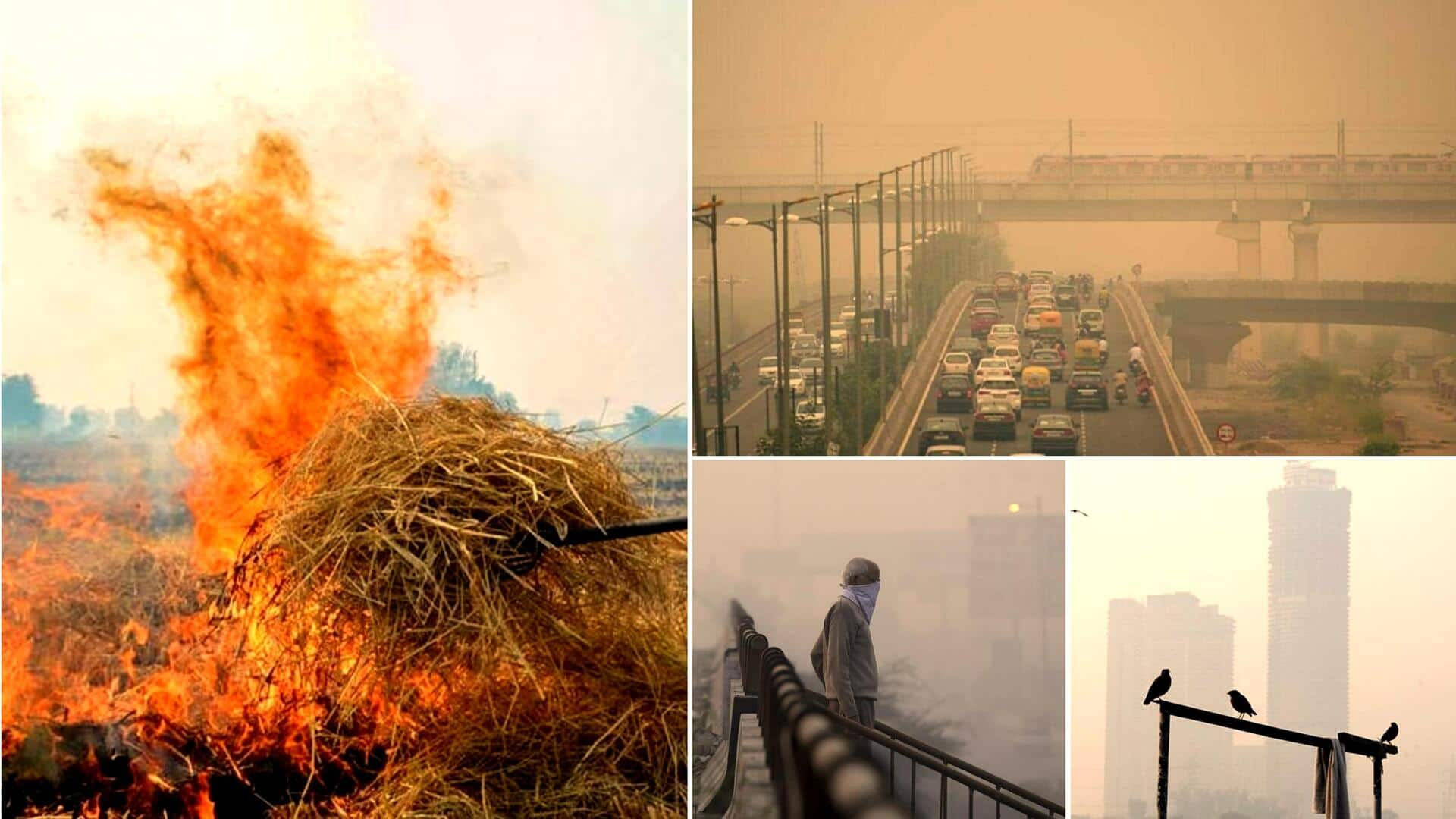
Delhi AQI crosses 300, thanks to farm fires, temperature drop
What's the story
Delhi's air quality took a nosedive on Saturday, with the Air Quality Index (AQI) crossing 300 in some places for the first time in the season, per News18.
The shift to the "very poor" category initiated the first phase of the government's Graded Response Action Plan (GRAP), giving authorities the green light to enforce various pollution control measures.
The drop is due to factors like cooler temperatures, slower wind speeds, and a rise in farm fires in nearby states.
Context
Why does this story matter?
Delhi ranked fourth among the world's most polluted cities in 2022, according to the World Air Quality Report prepared by IQAir.
This situation presents a major health risk for its nearly 30 million residents.
Both city and central governments have been repeatedly pulled up by the Supreme Court to implement anti-pollution measures.
Notably, Delhi's air quality turns hazardous every winter due to industrial and vehicular pollution, stubble burning, and the bursting of firecrackers, among other reasons.
Details
Some parts of Delhi report AQI above 300: Report
According to the Hindustan Times, Delhi's overall AQI was recorded at 231 on Saturday at 9:00am, which comes under the "poor" category.
Some parts of the national capital also reported an AQI above the 300 mark, considered "very poor," per News18.
The Centre's air quality panel directed local authorities in the National Capital Region (NCR) on Friday to ban coal usage in hotels, restaurants, and other industries.
These measures are part of the pollution control plan called the GRAP.
Insights
'Poor' air quality predicted for the weekend
The Commission for Air Quality Management (CAQM) sub-committee reportedly predicted that Delhi's air quality will stay at "poor" levels throughout the weekend.
As such, the first phase of the GRAP has been activated, allowing authorities to close down construction and demolition sites larger than 500 square meters that aren't registered with the government.
The CAQM has deemed it necessary to invoke Stage-I of GRAP in the entire NCR to tackle the deteriorating air quality situation.
Details
Initial pollution control measures rolled out
With the GRAP's initial phase now in effect, authorities can suspend unregistered construction sites, slap hefty fines on visibly polluting vehicles, and ramp up Pollution Under Control (PUC) inspections.
Other steps being taken include deploying traffic police at busy intersections, encouraging power distribution companies to minimize power outages, and regularly cleaning and spraying water on Delhi's roads.
These actions aim to lessen the impact of poor air quality on residents and the environment.
What Next?
Delhi's air quality expected to deteriorate with approaching winter
Experts caution that Delhi's air quality is likely to worsen as winter nears, with an increase in stubble burning in agricultural states like Punjab and Haryana.
The shift is observed starting in October, after the southwest monsoon retreats.
The change in wind direction toward northwesterly winds, which are cold and dry, along with falling temperatures, hinders the dispersion of pollutants.
Festival season is also coming, and there is apprehension that people might defy the firecracker ban.
Information
What are different categories of AQI
According to the Central Pollution Control Board (CPCB), an AQI between 0 to 50 is deemed "good." An AQI of 51 to 100 and 101 to 200 is considered "satisfactory" and "moderate," respectively. Meanwhile, a 201-300 AQI is "poor," and 301 to 400 is "very poor." Notably, anything above 400 AQI is considered "severe" by the CPCB.